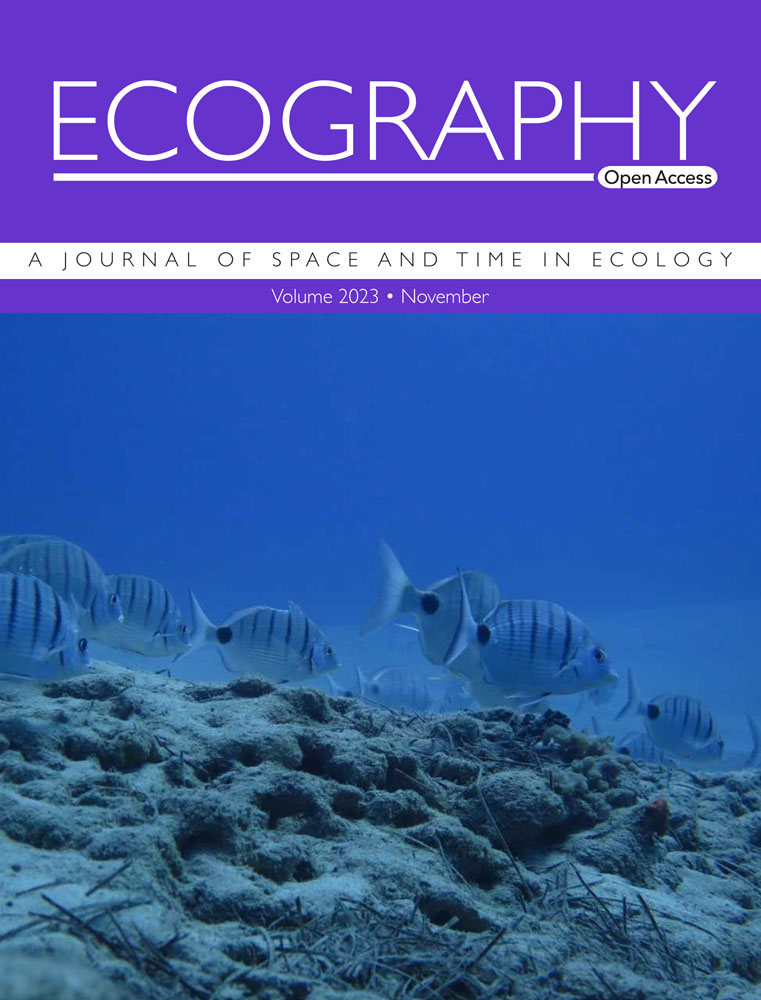Shared temporal increases in bill size among songbirds of the San Francisco Bay Area provide evidence for different seasonal selective pressures
IF 5.4
1区 环境科学与生态学
Q1 BIODIVERSITY CONSERVATION
引用次数: 0
Abstract
Museum specimens offer a unique and powerful tool for understanding the impact of anthropogenic change on populations over time. Morphological traits can be impacted by many different environmental variables that are difficult to separate from one another as potential driving factors. Comparative analyses among similar species jointly experiencing change in the same environmental variables can help pinpoint the selective pressures driving temporal morphological change. We assessed temporal change in bill size, tarsus length, and body size between six species of songbirds from the San Francisco Bay Area over the past 150 years. Wing length, as a proxy for body size, exhibited idiosyncratic temporal changes among species. In contrast, we found a significant increase in bill surface area across all but one species. Quantile regression analyses on bill size variation additionally revealed that temporal increases over the past century have been driven by increases in the largest bill sizes in some species, but increases in the smallest bills over time in others. The climate variables best explaining temporal change in bill size also differed among species, with some species responding more to changing summer variables (e.g. maximum annual temperature) and others in response to a changing winter climate. These results together suggest that different sympatric, resident bird species may be experiencing temporal morphological change in response to selective pressures experienced at different seasons. Our finding provides support for the season of critical thermal stress hypothesis that suggests variation in functional traits will be shaped by the season that imposes the greatest selective force on a population. Overall, this study has important implications for future research on the role of bills in thermoregulation and for conservation efforts based on the adaptive capacity of birds to respond to climate change.在旧金山湾区,鸣禽的喙大小在同一时间的增长为不同的季节选择压力提供了证据
博物馆的标本为理解人类活动对人口的影响提供了一个独特而有力的工具。形态特征可以受到许多不同的环境变量的影响,这些环境变量很难作为潜在的驱动因素相互分离。在相同环境变量中共同经历变化的相似物种之间的比较分析可以帮助确定驱动时间形态变化的选择压力。我们评估了旧金山湾区六种鸣禽在过去150年里喙大小、跗骨长度和体型的变化。翅长,作为身体大小的代表,在物种之间表现出特殊的时间变化。相比之下,我们发现除了一个物种外,所有物种的喙表面积都显著增加。对喙大小变化的分位数回归分析还显示,过去一个世纪的时间增长是由一些物种的最大喙大小增加所驱动的,而另一些物种的最小喙大小随着时间的推移而增加。最能解释喙大小时间变化的气候变量在物种之间也存在差异,一些物种对夏季变量(如年最高温度)的变化更敏感,而另一些物种对冬季气候的变化更敏感。这些结果表明,不同的同域和留鸟物种可能在不同季节经历的选择压力下经历了时间形态变化。我们的发现为临界热应力季节假说提供了支持,该假说认为,对种群施加最大选择力的季节将塑造功能性状的变化。总的来说,这项研究对未来研究鸟类在体温调节中的作用以及基于鸟类对气候变化的适应能力的保护工作具有重要意义。
本文章由计算机程序翻译,如有差异,请以英文原文为准。
求助全文
约1分钟内获得全文
求助全文
来源期刊

Ecography
环境科学-生态学
CiteScore
11.60
自引率
3.40%
发文量
122
审稿时长
8-16 weeks
期刊介绍:
ECOGRAPHY publishes exciting, novel, and important articles that significantly advance understanding of ecological or biodiversity patterns in space or time. Papers focusing on conservation or restoration are welcomed, provided they are anchored in ecological theory and convey a general message that goes beyond a single case study. We encourage papers that seek advancing the field through the development and testing of theory or methodology, or by proposing new tools for analysis or interpretation of ecological phenomena. Manuscripts are expected to address general principles in ecology, though they may do so using a specific model system if they adequately frame the problem relative to a generalized ecological question or problem.
Purely descriptive papers are considered only if breaking new ground and/or describing patterns seldom explored. Studies focused on a single species or single location are generally discouraged unless they make a significant contribution to advancing general theory or understanding of biodiversity patterns and processes. Manuscripts merely confirming or marginally extending results of previous work are unlikely to be considered in Ecography.
Papers are judged by virtue of their originality, appeal to general interest, and their contribution to new developments in studies of spatial and temporal ecological patterns. There are no biases with regard to taxon, biome, or biogeographical area.
 求助内容:
求助内容: 应助结果提醒方式:
应助结果提醒方式:


